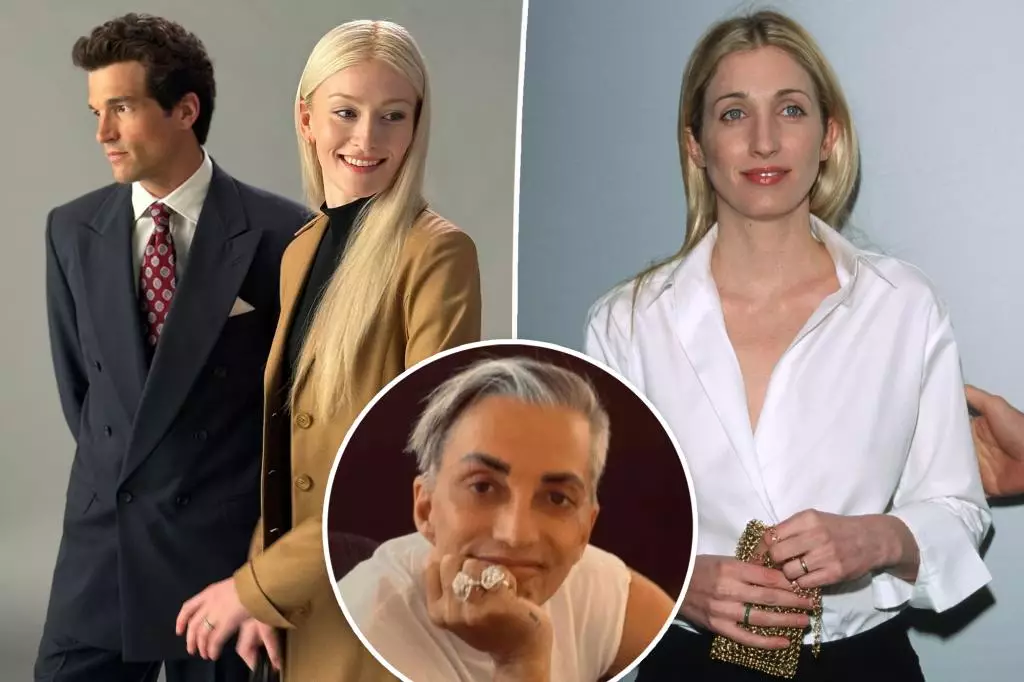While fashion often reflects the culture and aspirations of its time, the life and style of Carolyn Bessette-Kennedy stand out as a transcendental narrative that shapes and defines elegance. Her legacy has recently been revived with the announcement of Ryan Murphy’s upcoming FX series, “American Love Story,” spotlighting her romance with John F. Kennedy Jr. However, the project has encountered an immediate backlash, particularly surrounding aspects of Bessette-Kennedy’s portrayal. The first images of Sarah Pidgeon as Carolyn did not meet the expectations of her admirers, sparking criticism regarding accuracy in both wardrobe and hairstyling, expressions of dissatisfaction that underscore the weight of Bessette-Kennedy’s iconic status.
Discontent with Depiction
The critiques were notably amplified when renowned hairstylist Brad Johns, whose work with Bessette-Kennedy is legendary, voiced his discontent regarding artistic choices made in the production. According to Johns, the visual elements presented—such as the hair color described as “burnt” and a less-than-flattering outfit—failed to reflect the nuanced sophistication of Bessette-Kennedy’s aesthetic. Upon viewing the initial photographs, he articulated a profound disconnect: “It’s just wrong. Everything.” To him, the artistic direction implies a misunderstanding of Bessette-Kennedy’s allure, which was characterized by warmth and opulence, not ashy or lifeless tones.
The crux of this grievance illustrates a significant point: The allure of style icons is deeply entrenched in their unique characteristics. Carolyn’s hair was not simply blond; it was an artful balance of shades that complemented her complexion and personal brand. Unsurprisingly, those who appreciated her stylistic choices are particularly sensitive to misrepresentations—reminding us that public figures are not just images, but embodiments of culture and depth.
The Relationship Between Cult and Celebrity
As celebrities become symbols of fashion and style, they also develop a cult-like following. Carolyn Bessette-Kennedy, in particular, became a paragon of chic minimalism in the ’90s—a time when authenticity in fashion was crucial for carving out personal identity. Brad Johns illustrates how she transformed her hair through trust and experimentation that honored her vision. “I will make you blond, but it doesn’t take one day,” he recalls, highlighting the time and dedication that went into achieving her look. Such narratives feed into our understanding of her as not just a fashion figure but a dynamic personality who commanded attention not by excessive stylistic embellishments but by embodying understated elegance.
This complexity adds layers to the disappointment expressed by fans and critics alike. To oversimplify Carolyn’s attire or beauty choices is to strip away her essence, reducing her to mere stereotypes. Resentment of the initial photographs is a reflection of fans recognizing, and resisting, the risk of reductive storytelling.
A Promising Future Amidst Criticism
Fortunately, there are signs that Ryan Murphy and his team are taking these concerns to heart. In his statement addressing the backlash, Murphy clarified that the first look was not definitive: “That is not the wig we’re using, that is not the purse we’re using. Those are just things we had to show the studio.” This admission could reflect a conscious effort to engage and listen to the cast of the show, ensuring a more authentic representation going forward.
Additionally, Murphy’s outreach to fashion bloggers dedicated to Bessette-Kennedy speaks volumes about his commitment to accurately encapsulating her influence in the new series. The decision to form an advisory committee and gather vintage pieces known to belong to her indicates that he understands the stakes involved in portraying an icon. Entering into collaboration with Bessette-Kennedy’s admirers demonstrates an awareness that careful attention to detail can transform criticism into admiration.
The Heart of Style Legacy
Moreover, Bessette-Kennedy’s story continues to resonate beyond mere aesthetics. It illustrates a broader societal admiration for authenticity in craftsmanship, echoed in Johns’ devotion to the beauty of hair. The conversation surrounding her legacy is not just about looks but encompasses ideals of professionalism, vulnerability, and enduring elegance that inspires new generations.
In the world of celebrity, versatile depictions matter. Authenticity prevails as the audience demands a portrayal that reflects the real complexity of iconic lives. Carolyn Bessette-Kennedy has always embraced a concept of beauty that transcends time and trends. Therefore, moving forward with genuine respect for her memory becomes crucial—an artistic necessity that honors her legacy in a way that captivates both the nostalgic and the new.

